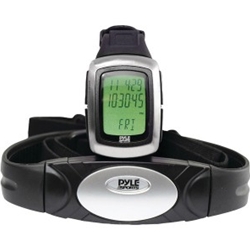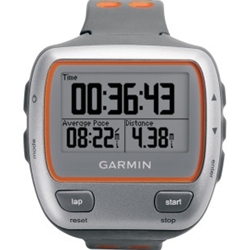If you’re not sure how hard you are working out, a heart rate monitor can help you determine the intensity of your workout so you can get the most out of your physical activity. When you’re doing aerobic activity, such as walking or biking, “exercise intensity†correlates with how hard the activity feels to you and how hard your heart is working.
Two Ways to Measure Exercise Intensity
Â
1) How you feel — Exercise intensity is a subjective measure of how hard the physical activity feels to you while you’re doing it, or, your “perceived exertion.â€
2) Your heart rate — Your heart rate offers a more objective look at exercise intensity. In general, the higher your heart rate is during physical activity, the higher the exercise intensity. A heart rate monitor is a useful device you can use to measure your heart rate as you run, jog, or doing any cardiovascular exercise.
Studies show that your perceived exertion correlates well with your heart rate. So if you think you’re working hard, your heart rate is likely elevated.
Know Your Target Heart Rate Zone
 Â
Â
By figuring our your maximum heart rate — the upper limit of what your cardiovascular system can handle during physical activity – you can calculate your desired “target heart rate zone.â€Â Why is this important? Because working out within your target heart rate zone gives you the best results for burning fat and losing weight.
This article by the American Heart Association explains how you can calculate your maximum heart rate and use it to determine your target heart rate zone.
Benefits of Exercising in Your Heart Rate Zone
Â
By exercising within your target training zone, you’ll achieve more in less time. Each zone offers different benefits.
- Health Maintenance (40-50% of maximum heart rate):  Low intensity level training. Good if you’re a beginner and strengthening your cardiovascular system.
- Moderate Exercise (50-70% of maximum heart rate): Increases strength and endurance. Burns calories faster and can be sustained during longer workouts.
- Vigorous Exercise (78-90% of maximum heart rate): Improves speed and power. This zone builds muscle faster, but cannot be maintained for long workouts.
Improve Workouts by Using a Heart Rate Monitor
Â
By using a heart rate monitor while exercising, you can monitor your heart rate and pulse and maintain your workout within your chosen zone. There are several different types of heart rate monitors. Most heart rate monitors use a chest strap that picks up heart signals and transmits them wirelessly to a wristband display.
A simple entry-level heart rate monitor, like the Oregon Scientific SE102, works well for most people. But if you want more bells and whistles, here are some interesting features to look for in a heart rate monitor:
- Download Personal Data to your PC – If you want to track and analyze your exercise history, the PYLE PHRM26 Speed & Distance Heart Rate Watch has a downloadable PC link interface program for collecting data on your heart rate, total steps, total distance and total calories burned.
- GPS Enabled to Measure Time, Place and and Distance – The Magellan Switch Crossover GPS Watch uses GPS satellite data to accurately record how far and how fast you’ve gone.  Up to 60 hours of activity history are stored in the unit, so you can go back and review how you did last week or last month.
 Multi-Sport Monitor, including Swimming – For athletes who participate in variety of activities (including swimming), the Garmin Forerunner 310XT is water-resistant to 164 ft (50 m).  Use it to track data in multiple sport modes and send the info wirelessly to your computer.  It’s the perfect training tool for triatheletes!
Multi-Sport Monitor, including Swimming – For athletes who participate in variety of activities (including swimming), the Garmin Forerunner 310XT is water-resistant to 164 ft (50 m).  Use it to track data in multiple sport modes and send the info wirelessly to your computer.  It’s the perfect training tool for triatheletes!
Summary
Â
According to the Mayo Clinic, you’ll get the most from your workouts if you’re exercising at the proper exercise intensity for your health and fitness goals. Using a heart rate monitor will make it easy to accurately track your heart rate and let you know if you should pick up the pace or back off a bit.




